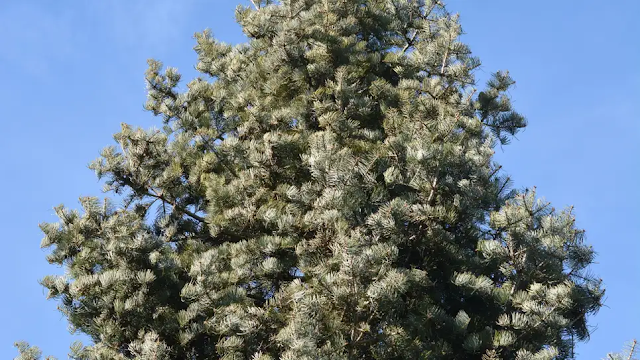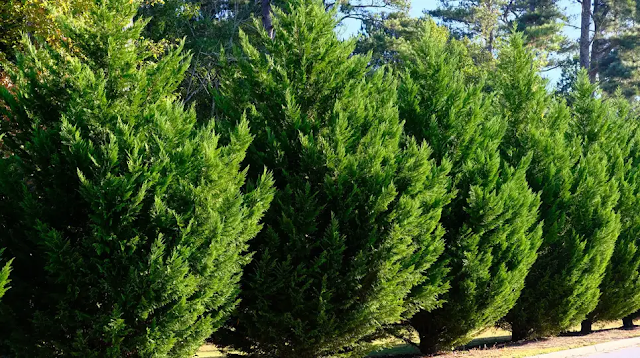15 of the Best Live Christmas Tree Species (and Which to Choose). When it comes to Christmas decoration, not all "real" trees are made equal
If you celebrate Christmas, you almost certainly have a decked tree somewhere in your home. My childhood tree was a dusty old artificial replica that had to be erected branch by limb. We always stored it in the basement, crammed inside a cardboard box, and opening it was a game of Spider Or Not? every Christmas season.
My parents eventually decided that a real, live tree would be a more dignified option (changing our annual game to one of Squirrel Family or Not? ), and thus began our tradition of standing around various parking lots while gruff men cheerfully sold us what appeared to my young eyes to be a random pine tree.
But these plants were not chosen at random! And they shouldn't be: there's a startling variety of tree species to pick from for the centerpiece of your Christmas décor. If you're looking for a genuine Christmas tree this year, here are the 15 greatest types—and why you'd select each one over the others.
The Fraser Fir tree
The Fraser Fir is one of the most popular Christmas tree species in the United States. The Fraser Fir, which is native to the Southeastern United States (according to the North Carolina Christmas Tree Association, 58 million are cultivated in that state alone), may be identified by the silvery underside of its needles. These trees endure up to six weeks in your living room and don't drop their needles too much, and their limbs are robust and readily retain ornaments. So, if you want a tree that will still look good when you finally succumb to societal pressure and take it down in late January, this is the way to go.
Blue Spruce from Colorado
A Colorado Blue Spruce is an excellent choice if you want something a bit different. It develops into a near-perfect triangular form and has a noticeable bluish hue rather than the conventional green. While you must consider the color while choosing decorations, the Blue Spruce may make a significant impact on your Christmas decor with a little care. It's also a strong tree with branches that can easily support heavy ornaments. However, the Colorado Blue Spruce, like many other strong trees, will get its revenge through its highly pin-like needles, which will puncture you repeatedly unless you wear gloves while decorating.
Fir Balsam
If the aroma of a genuine Christmas tree reminds you of being out in a snowy wood late at night, the Balsam Fir is the tree for you. The Balsam, with its flat, black needles, is one of the most aromatic kinds of tree typically used for the holidays. One disadvantage is their fragility: balsams dry out quickly (though they do seem to hold onto their needles), so keeping them hydrated is essential—but even so, you definitely won't want them around after the last of the eggnog has been drank. Its limbs are also quite flexible, making them unsuitable for heavier ornaments or a large number of decorations, as the branches would snap.
The Douglas Fir
The majestic Douglas Fir has a beautiful triangular shape and a full-bodied presence, making it ideal for large rooms. A Douglas Fir will fill the area beautifully if you wish to set up in a setting where most trees appear like Charlie Brown's. The tree also smells wonderful, infusing your house with a festive perfume. The needles are soft, so this tree will not sting you, but the limbs aren't particularly robust, so don't put heavy decorations on it.
The Grand Fir
Grand Fir trees are aromatic and feature rich, dark green needles that can grow to be two inches long, but 1-1/2 inches is more common. Because Grand Fir trees are lovely on their own, they are an excellent choice for a minimalist décor plan. If you decorate your tree with stylish garland and a few special decorations, a Grand Fir may fill in the gaps well. It also has a pleasant aroma that makes the entire house smell like Christmas.
The Noble Fir
The Noble Fir is a huge tree that fills up rooms, thanks to its amazing scale and robust branches that can withstand a lot of weight. The Noble also has lovely cones that lend depth to the design, making these trees suitable for a minimalist décor plan (not to mention a great choice for wreaths and other non-tree decorations). That means that if you have a large Great Room but don't want a lot of flashy decorations, the Noble Fir will scale nicely without requiring a six-hour trimming section—just throw on some garland and go have a drink.
The Virginia Pine
If you want a tree that smells nice and performs well as a Christmas tree but won't break the bank, the Virginia Pine is probably your best bet. It looks like a Christmas tree should, its limbs are robust and can hold a lot of ornaments, and it's likely to be the cheapest option at your tree lot, but costs can vary. However, the Virginia Pine has one main drawback: it is extremely sticky. These trees have a lot of sap, and if you don't use gloves when handling them, you'll get a lot of sap on you.
The White Fir
Do you destroy houseplants on a regular basis? Have you ever neglected to feed your dogs or even your own children? Then the nearly unkillable White Fir is the ideal choice for your Christmas Tree requirements. The White Fir will look the part with its magnificent cone form, mild blue-green hue, and long, silky needles. But it's its toughness that makes it desirable: this is a tree you can set up, enjoy for one night, then go on a two-week vacation and it'll be fine when you return.
The Arizona Cypress
The Arizona Cypress, with its pale gray-green color and thin needles, adds a unique aspect to your holiday décor. The contrast between the pale green needles and the reddish branches will make it stand out regardless of what you hang on it—in fact, it's a fantastic choice for both minimalists and people who have seven boxes of family ornaments that must be displayed every year. If you're searching for something a little out of the ordinary, this is a terrific option.
Spruce of Norway
If you want to go large and luxurious, select the Norway Spruce, which is showcased every year at Rockefeller Center in New York City. It's a rich, beautiful tree with vivid green, festive hue that resembles a Christmas tree from a holiday card. There is one huge disadvantage: the Norway Spruce is sensitive and will not live more than a week, even if you water it regularly (which you must). On the other side, this makes it great for those of you Scrooge-like humbugs who decorate for Christmas the week before and pull everything down the instant the final piece of wrapping paper is tossed.
Scottish Pine
If you have a lot of heavy ornaments to hang, the Scotch Pine (also known as a Scots Pine) is a fantastic choice since the branches are robust and bend slightly upward, almost as if they were created to support that heritage ornament evidently made of solid lead. They also keep their needles and can withstand neglect, so even if you forget to water them, they will still look fantastic. That makes a Scotch Pine an excellent choice if you want to set up your tree on Black Friday and leave it up until spring, but there is a catch: its needles are tiny death blades. Wear gloves while handling anything.
The White Pine
If you don't care about ornaments and prefer a simple, low-cost, low-maintenance tree, the White Pine is a suitable option. It's simple to obtain and typically inexpensive; it has soft needles and a mild aroma, so it won't bother you; and it looks extremely good. However, the limbs are flimsy and won't hold decorations properly, so this is an excellent tree for someone who just wants to hang some lights and call it a day. This makes it a wonderful tree for houses with a lot of little children because it won't scratch or adhere to them, and it's also a nice tree for paper garlands and other low-density, homemade decorations.
Cypress Leyland
If you have allergies, you may realize that bringing a real tree into the house does not help. In such instance, a Leyland Cypress, which is most common in the Southeast, is an excellent choice. It's a pretty tree with delicate needles, but it doesn't release pollen (it's a sterile hybrid), has no scent, and doesn't create sap. That makes it the closest thing to a hypoallergenic tree you can get while still having a genuine Christmas tree in your home.
Fir Nordmann
The Nordmann Fir is nearly ideal for the ordinary Christmas tree. It has a pleasing triangular form, is drought tolerant, and has delicate needles that do not come off readily. It's a tree that won't stand out, but it also won't disappoint, so if you don't want to spend more than five minutes choosing out a tree, the Nordmann Fir is a great option since you can't go wrong. Furthermore, if you don't want your entire house to smell like Christmas, this is a low-scent choice.
Silver Fir from Europe
In Europe, the European Silver Fir is a traditional option for Christmas trees. If you have a lot of huge ornaments that require room to shine, this tree type has widely spread branches that complement larger ornaments. Because there is lots of space between the branches, you may also use (electric) candles with this tree for a truly classic effect. The European Silver Fir has fallen in favor as a Christmas tree, yet it is great for those looking for historical beauty.
SOURCE
What do you think of this blog? Write down at the COMMENT section below.
















No comments:
Post a Comment